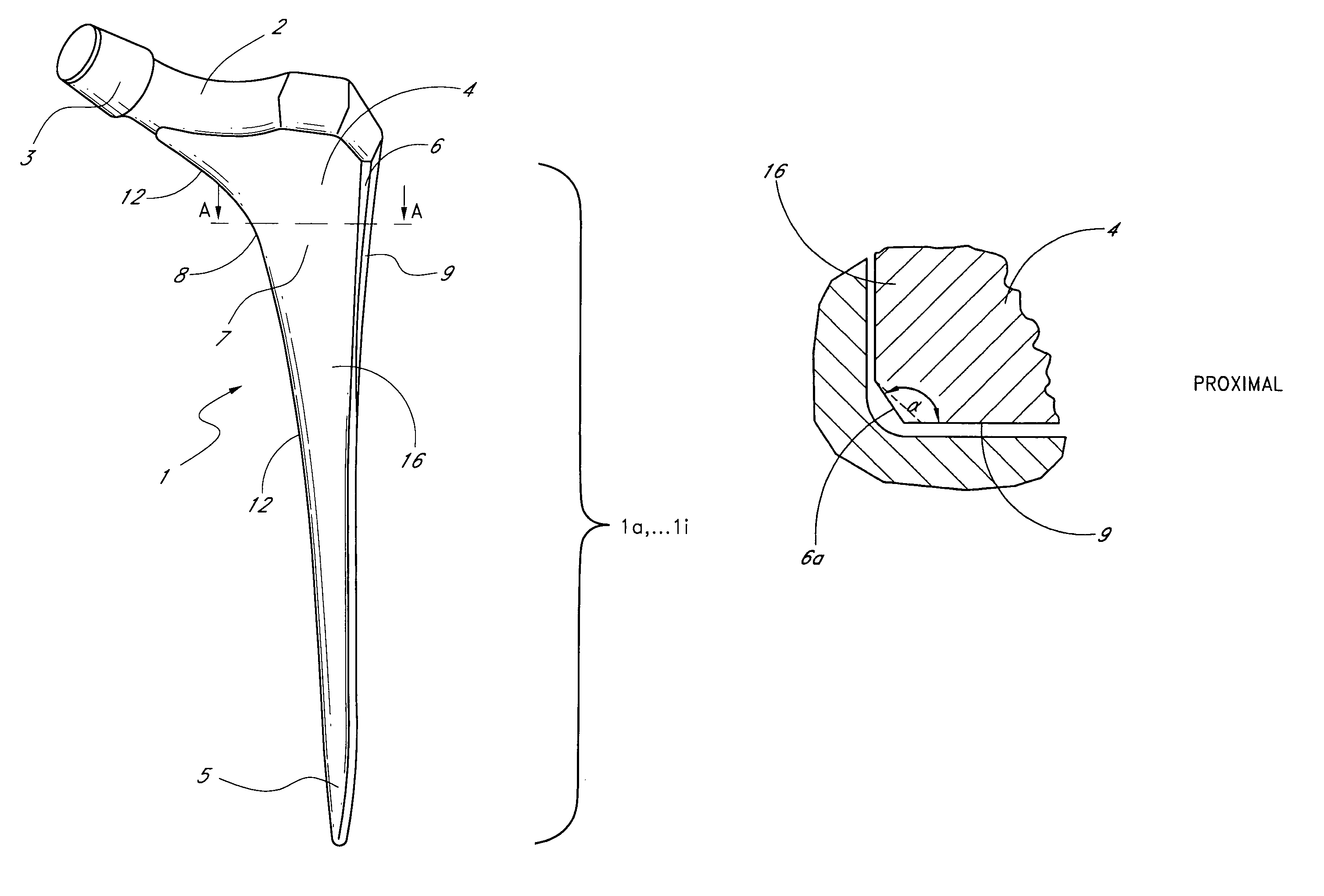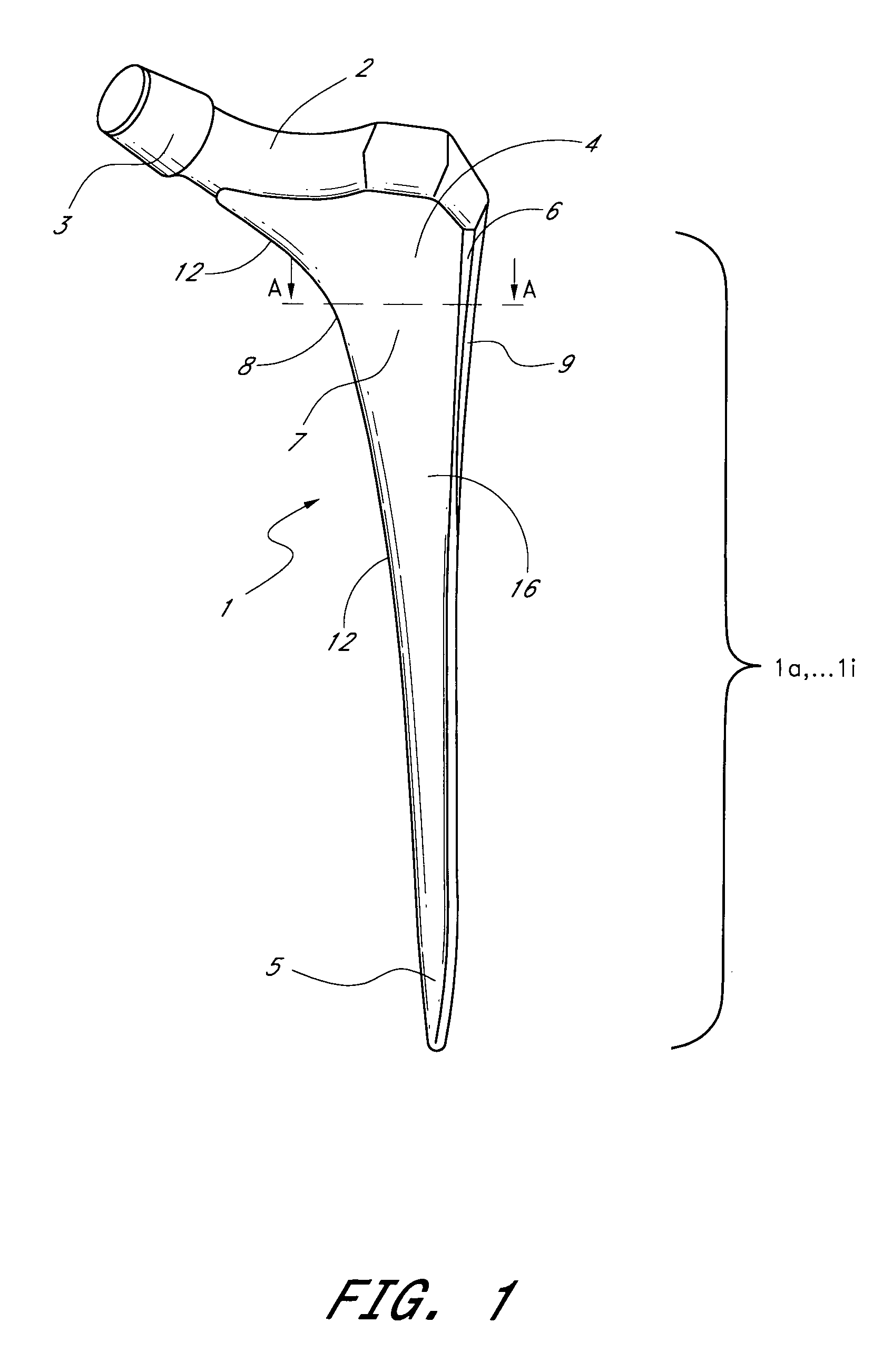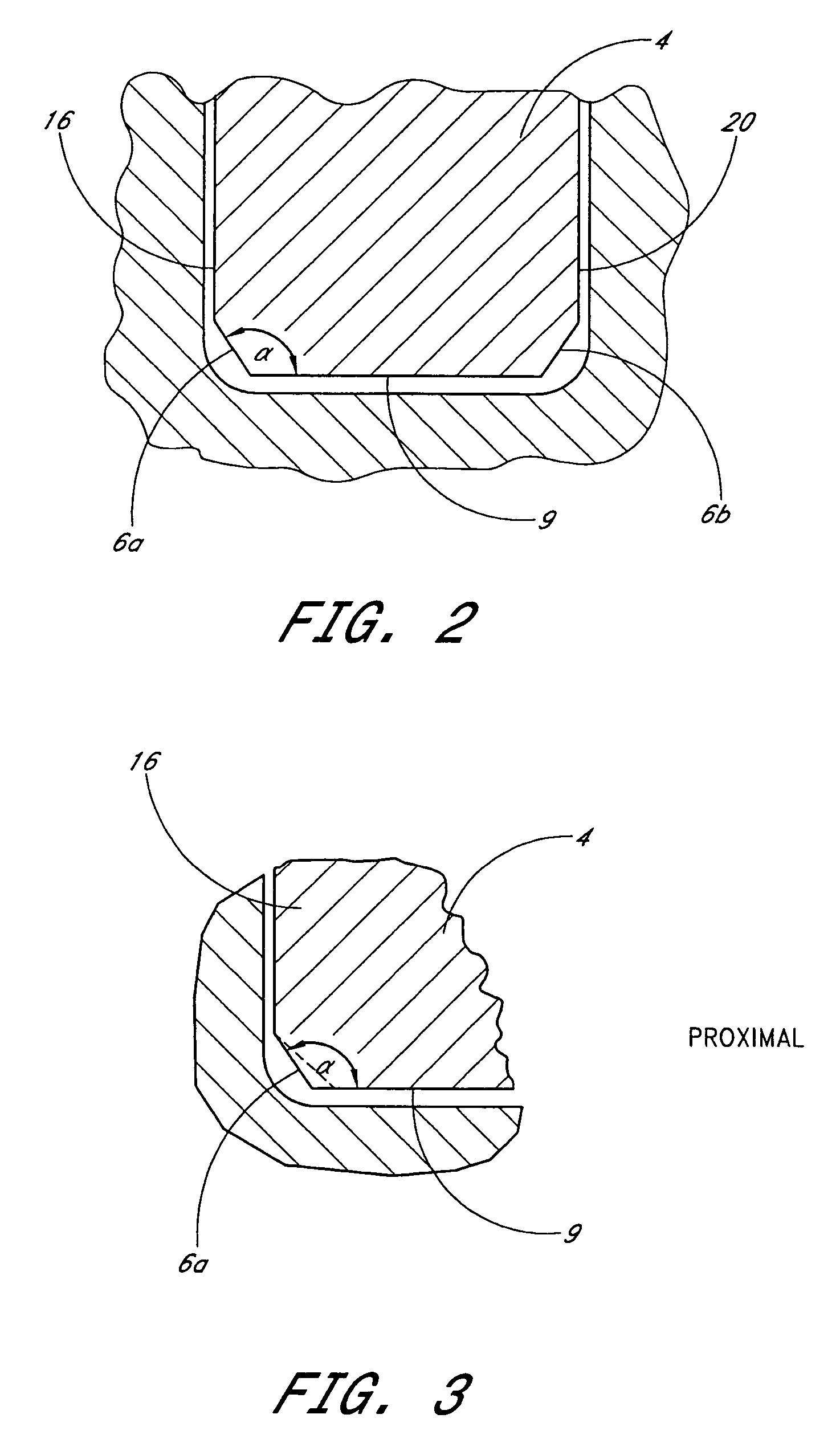Shaft for anchoring a hip joint prosthesis in the femur
a hip joint and femur technology, applied in the field of profiled shafts for anchoring hip joints in the femur, can solve the problem of comparatively large empty spaces in the corner regions, and achieve the effect of reducing the number of screws
- Summary
- Abstract
- Description
- Claims
- Application Information
AI Technical Summary
Benefits of technology
Problems solved by technology
Method used
Image
Examples
Embodiment Construction
[0024]FIG. 1 gives a perspective view of an exemplary embodiment of a profiled shaft in which the characteristics according to the present invention are implemented. The profiled shaft shown here is in general designated by 1 and comprises a lower, distal, narrow end 5 and a section 7 that expands upward and in its upper end region is continuous with a fixation section 2, the latter in turn being continuous with a section 3 in the shape of a truncated cone that serves for the fixation of a spherical joint head. On the medial narrow side 12 in the proximal region the shaft has the form of a continuously bending curve 8, which ultimately ends in the region of the fixation section 2.
[0025]On the lateral side (anterior broad side 16) the shaft section merges in its proximal region with a trochanter wing 4. on which beveled corner surfaces 6 (facets) are formed. The anterior broad side 16 is substantially parallel to a posterior broad side 20 (FIG. 2).
[0026]In the conventional constructi...
PUM
 Login to View More
Login to View More Abstract
Description
Claims
Application Information
 Login to View More
Login to View More - R&D
- Intellectual Property
- Life Sciences
- Materials
- Tech Scout
- Unparalleled Data Quality
- Higher Quality Content
- 60% Fewer Hallucinations
Browse by: Latest US Patents, China's latest patents, Technical Efficacy Thesaurus, Application Domain, Technology Topic, Popular Technical Reports.
© 2025 PatSnap. All rights reserved.Legal|Privacy policy|Modern Slavery Act Transparency Statement|Sitemap|About US| Contact US: help@patsnap.com



